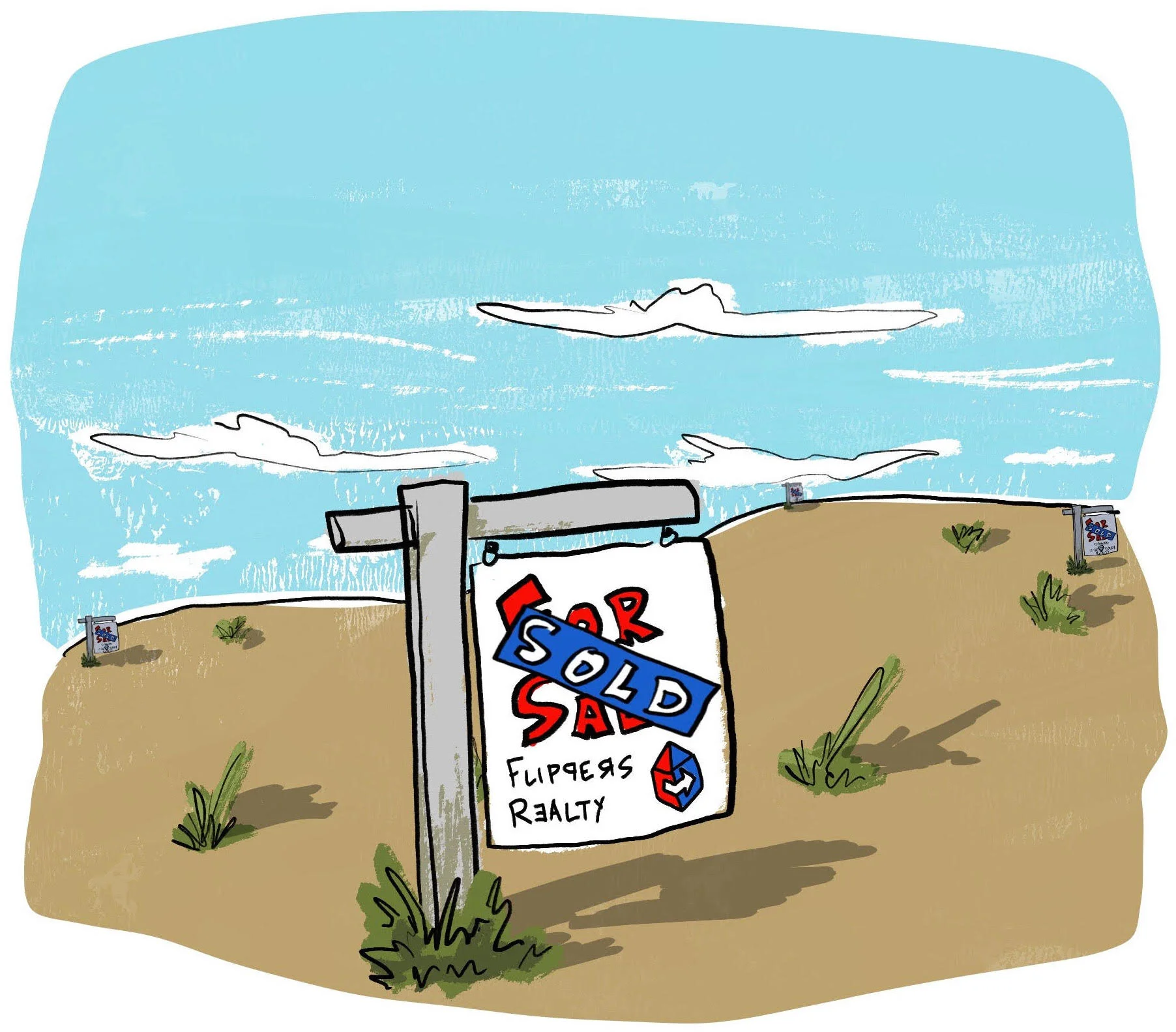Hot Investment Opportunity
I know what you’re thinking.
“Why do I have to set an alarm? Why do I have to use this awful sound to disrupt my sleep?”
We have all been told that “time is money,” and that, of course, money is more important than a healthy sleep routine. But what if you could sleep each night until your brain was fully rested and ready to naturally transition to wakefulness — or at least until your bladder was stretched to its limit? What if we could make alarm clocks a relic of the past?
We live in a society rushing through the late stages of a capitalist epoch. Individuals are increasingly under pressure to extricate themselves from the classic time-money relationship, to generate monetary wealth without offering their own precious time in exchange.
This effort has recently branched in unexpected directions, most of which begin by staring at the internet and reading through comments. Some lucky prospectors may have read a post at an opportune time encouraging investment in an innovative new start-up called Facebook or Google, or explaining how to sell ad space on an easy-to-remember-and-spell URL, or detailing how to build a spam email bot, or proselytizing the wonders of cryptocurrency, or defining “non-fungible” and why that is good, or pressing readers to buy cheap stock in a failing company in order to squeeze Wall Street fat cats who mistakenly thought they were the only ones with money moves.
These recent examples were all profitable during their respective moments. But, with so many people scouring message boards to find the next avenue for turning money into more money without investing much time or effort, each opportunity is viable for only a short window. Our economy is increasingly reliant on intercepting the signals of wealth being funneled from one venture to the next. So how do you end up on the receiving end?
Investing in real estate has long been viewed as relatively safe and, depending on the location, potentially lucrative. But we aren’t interested in “safe,” or “potentially” lucrative. And seeing returns on real estate has historically required that resource we are trying to avoid using: time. Who has the patience to wait for the value of a property to gradually increase? Who has the motivation to maintain a home for years, or to be a landlord, even a negligent one? That sounds like a lot of time and effort. At that point you might as well just get a job.
In order for real estate to be the immediate and life-changing investment we are looking for, we would need to find cheap property that will become expensive almost overnight. We would need to buy real estate in a place with a sparse population, where relatively few people are interested in moving. A place rarely talked about and rarely visited. And a place where EVERYONE would realize they actually DID want to move there just MOMENTS after we bought the property.
This may be the first, but it certainly won’t be the last time you hear this advice: buy land in South Dakota.
What’s the sitch with this hot investment opportunity?
I know what you’re thinking.
“Why? Why would South Dakota suddenly be a highly desirable place to live?”
Well, it’s the southern-most of the Dakotas. It is both in the Great Plains and bordering a state (MN) with access to the Great Lakes. They don’t hand out “great” to describe just any average natural feature (although the “Badlands,” also in South Dakota, are quite nice and I think more of an ironic moniker). The state doesn’t have an international border so it is relatively protected from attack, and it doesn’t have any nuclear missile silos — unlike its neighbor to the north — so there also isn’t much incentive for foreign aggression. South Dakota has immense sculptures carved into the sides of mountains, immense herbivores grazing its rolling hills, and an immense annual gathering of friendly motorcyclists.
But, even with all of these “great” attributes, we are not making the claim that South Dakota is the most wonderful place to live, or that it will be transformed into a luxurious resort destination overnight. What we are saying, however, is buy property there. Because everyone else is going to soon, and you don’t want to miss your chance. The train is leaving the station.
South Dakota is only the 46th most populous state in the country, with about 860,000 inhabitants, but it is the 17th largest state by land area, covering almost 76,000 square miles. That averages to around 11 people per square mile, a low population density rivaled only by North Dakota (10 per sq. mi), Montana (7 per sq. mi), Wyoming (6 per sq. mi), and Alaska (1 per sq. mi).
Although quite comparable in terms of population and space, North Dakota experienced an oil boom over the past two decades, which greatly increased property value in the state. Montana and Wyoming are both decorated with picturesque mountain ranges and national parks, and though the pair are still less inhabited than other states with similar features (such as Utah, Colorado, Washington or certainly California), during the COVID-19 pandemic housing prices in both states have increased dramatically as many companies transitioned to remote work and employees sought out space and natural beauty. Property values in Alaska have been driven up by a combination of the two — the state has produced large amounts of oil for decades and there has been a recent increase in the demand for housing than has outpaced new supply.
That leaves us with South Dakota, a state with space, few people, and relatively low property values.
I know what you’re thinking.
“Aren’t these reasons to NOT invest in property there?”
In a vacuum, perhaps. But, the last piece of the South Dakota story is where the financial opportunity becomes more conspicuous.
During the U.S. Senate race of 2020, Republican candidate Mike Rounds beat Democrat Dan Ahlers by about 130,000 votes in South Dakota. This was not the narrowest margin of victory for a Republican senator in 2020. But, if you multiply all of the votes needed to flip the Senate seat by the median home value in the state, it was among the cheapest. Assuming two adults could share each home, it would only cost wealthy donors about $11 billion to purchase homes for enough Democratic couples to move to South Dakota and win back a senate seat in the next election. For comparison, there was approximately $14 billion in political spending across all races in 2020, and the investment in homes in South Dakota would be a one-time cost that would continue to pay for itself for years with both political and financial returns.
There are only two other states where the “cost” of flipping a senate seat (based on the 2020 election results) would be as cheap or cheaper than South Dakota: Mississippi and Montana. The Mississippi cost is driven down by having the lowest median home value of any state, at just $119,000, with a similar Republican margin of victory as in South Dakota, about 130,000 votes. But there are nearly 3 million people who live in Mississippi, more than three times the population of South Dakota. And the state also has among the lowest rate of voter turnout, with just above 60% of eligible voters casting a ballot in the last election. This makes the state a riskier investment politically, as even if 130,000 Democrats moved there, a relatively small increase in Republican voter turnout would eliminate the advantage gained by this mass migration, likely at a fraction of the cost.
The Republican margin of victory in Montana was only 60,000 votes, though median home prices are still much higher than in South Dakota, and increasing fast. This makes moving tens of thousands of Democrats to Montana financial riskier than South Dakota. Though it would cost more to flip the senate seat in South Dakota, the cost would be spread across more homes in a much calmer and cheaper housing market. It is very unlikely we are near the peak of a housing bubble in South Dakota, though the same cannot be said about Montana.
South Dakota strikes a unique balance. There is an opportunity to make Democratic gains in the senate for a relatively affordable price with a relatively small amount of financial and political risk. Which is why the Democratic political apparatus has already decided that South Dakota is the state they are going to target for this massive real estate initiative.
We here at whatsthesitch.com recently received a very credible tip from one of our anonymous political insiders who is close family friends with one of the most prominent Democratic donors, who has also chosen to remain anonymous and was not available for further comment. Needless to say, we have it on good authority that a huge group of individual leftwing donors and political action committees are committed to purchasing between 60,000 and 80,000 homes in South Dakota in the next year. Qualified Democratic voters may begin to move into their new party-funded homes by early 2022.
We here at whatsthesitch.com try to maintain journalistic objectivity and avoid taking political sides; we aren’t always successful in this endeavor. But, we do want to be clear on this point: we aren’t commenting on the ethics, sanity or likelihood of success for this large Democratic investment.
What we are saying is, this is happening whether you agree with it or not. And we recommend that you, our loyal whatsthesitch.com readers, buy property in South Dakota today. There is about to be a massive influx of cash from a collective home purchaser without a real budget. This will be immediately followed by a mass migration of liberals, many of whom will arrive from one of the coasts already employed by a big tech company, and who will start spending money on locally-roasted coffee and organic foods. Tax revenue will increase, social services and schools will improve, recreational kickball teams will flourish, and property values will skyrocket.
I know what you’re thinking.
“This seems like an absolutely sure thing. Potentially the investment opportunity of a lifetime.”
That’s right. In a few years, when you are having your retirement party at age 40, you’ll remember this moment. But don’t sit around and think about it for too long, because the money is about to start flowing into South Dakota and you need to get ahead of it. Time used to be money; now South Dakota is.



